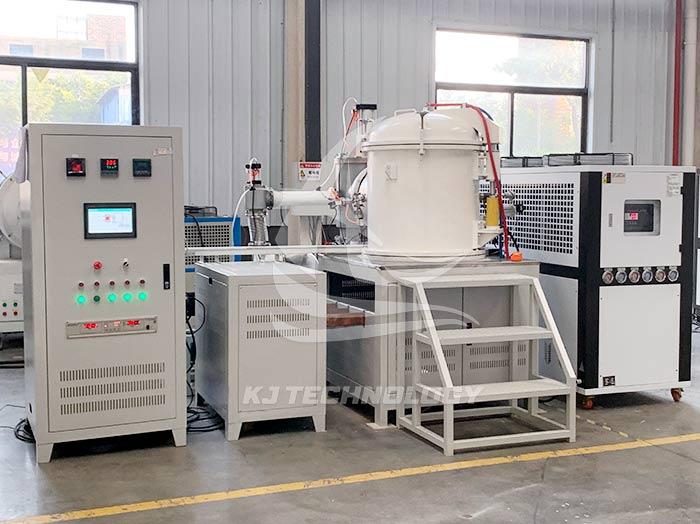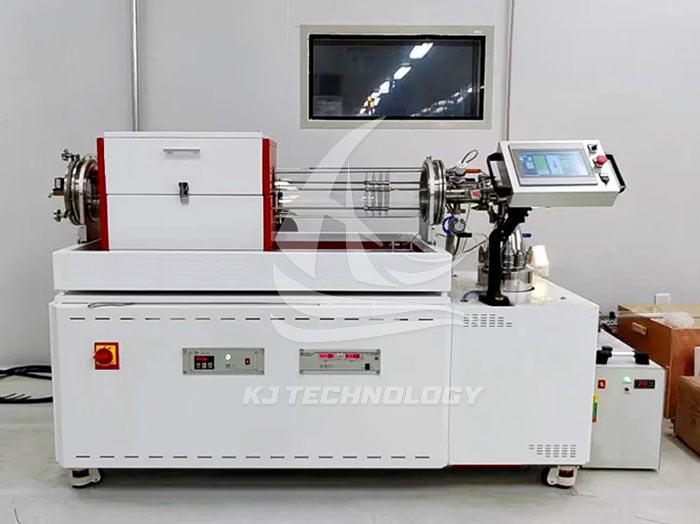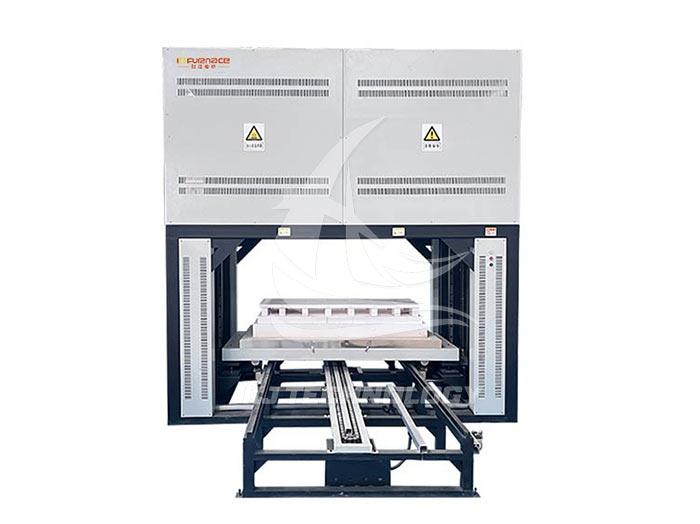lab graphite furnace
 10-23-2025 Author: KJ technology
10-23-2025 Author: KJ technology
Laboratory Graphite Furnace: Principles, Structure, Applications, and Operating Specifications
1. Core Definition and Working Principle
A laboratory graphite vacuum furnace is a high-temperature heat treatment equipment that uses graphite as a heating element in a vacuum or specific atmosphere (such as argon or nitrogen) environment. Its working principle is based on the resistance characteristics of graphite: when current passes through graphite, the resistance generates heat, which is transferred to the materials inside the furnace through thermal radiation and conduction, achieving processes such as sintering, annealing, and brazing. Vacuum environment can effectively prevent material oxidation, improve purity and performance.
2. Structural composition and key components
Furnace body:
Furnace cover and body: Adopting a stainless steel double-layer sandwich wall structure, with circulating cooling water channels inside to prevent high-temperature deformation.
Observation window and temperature measuring hole: equipped with quartz window for observing the state inside the furnace, and thermocouple or infrared temperature measuring device for real-time monitoring of temperature.
Material receiving platform: Made of high-purity graphite material, designed with multiple layers evenly distributed to ensure even heating of the sample.
Heating system:
Graphite heating element: Round graphite carbon tube, wrapped with heating wire, generates heat through resistance effect.
Thermal insulation screen: multi-layer graphite and graphite felt materials, reducing heat loss and improving energy efficiency.
Vacuum system:
Vacuum pump set: optional diffusion pump, Roots pump, mechanical pump combination, cold no-load limit vacuum up to 6.67 × 10 ⁻ Pa.
Vacuum pipeline and valve: KF connection is adopted, equipped with high vacuum pneumatic baffle valve to ensure airtightness.
Control system:
Temperature control: configurable LCD touch screen+PLC, supports PID programmable control, temperature accuracy ≤ ± 1 ℃.
Atmosphere control: Automatic inflation system, supporting protective gases such as nitrogen and argon.
3. Technical features and advantages
High temperature capability: The maximum temperature can reach 1800-2200 ℃, meeting the processing needs of refractory metals, ceramics and other materials.
Vacuum pure environment: prevents oxidation and pollution, suitable for the preparation of high-purity materials such as semiconductors and advanced ceramics.
Rapid temperature rise and fall: Graphite has excellent thermal conductivity, shortens experimental cycles, and improves efficiency.
Multi zone temperature control: High end models are equipped with multi zone independent temperature control to adapt to complex heat treatment processes.
Automation and Intelligence: Integrating sensors and control algorithms to achieve precise control of temperature, atmosphere, and vacuum degree.
4. Application Fields
Materials Science: Synthesis of high-temperature ceramics and superhard materials (such as diamond and cubic boron nitride).
Semiconductor industry: growth and heat treatment of silicon crystals and silicon carbide crystals.
Metallurgical engineering: melting and annealing of high-purity metals (such as titanium and zirconium) and alloys.
Chemical engineering: high-temperature chemical reactions (such as catalyst activation), organic matter decomposition.
Biopharmaceuticals: Sterilization and heat treatment of bioceramics and medical devices.
5. Operating standards and safety points
Power on preparation:
Check if the power supply, cooling water system, vacuum pump, and air circuit connections are normal.
Clean the interior of the furnace and wipe the graphite boat with gas or alcohol to remove impurities.
Sample placement:
Choose an appropriate graphite boat, evenly distribute the samples, and avoid contact with the furnace wall or heating elements.
Ensure that the furnace door is completely closed to prevent vacuum leakage.
Parameter settings:
Set the temperature, insulation time, and heating rate according to the experimental requirements.
Select a protective gas (such as argon) and set the inflation pressure and flow rate.
Operation monitoring:
Start the vacuum pump and extract air from the furnace to the desired vacuum level.
Press the heating button and monitor the temperature curve to ensure it is within the set range.
Experiment completed:
After stopping heating, wait for the furnace temperature to drop to a safe range before taking out the sample.
Turn off the vacuum pump, gas source, and power supply, and clean the furnace and graphite boat.
Security protection:
Wear high-temperature gloves, goggles, and protective clothing to prevent burns.
Regularly check the airtightness of the vacuum system to avoid accidents caused by air leakage.
6. Maintenance and upkeep
Daily cleaning:
After each experiment, remove the residue from the furnace and blow it with a soft cloth or gas.
Regularly wipe the quartz windows to ensure transparency.
Regular inspection:
Graphite components: Check the wear of heating rods and graphite tubes, and replace them in a timely manner.
Vacuum system: Test vacuum degree, inspect vacuum pumps and valves.
Water cooling system: Check the flow and level of cooling water to prevent overheating.
Calibration and Debugging:
Calibrate the temperature control system monthly to ensure temperature accuracy.
Check the thermocouple and infrared temperature measuring device, and adjust the deviation.
Long term discontinuation:
Run the device for half an hour every week to prevent it from getting damp or aging.
Store in a dry environment to prevent corrosive gases from corroding.








